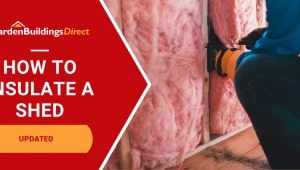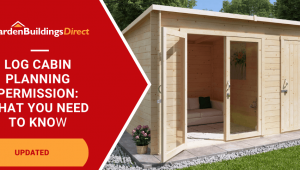Jump to:
Fire risk in a wooden shed? Absolutely possible. This is especially true if it doubles as a garden workshop or if you use anything that throws off heat or sparks. The good news is that you brush off the worry once you know how to fireproof a wooden shed.
Larger wooden sheds and log cabins (over 15 square metres internal floor space) might also be required to undergo some fire proofing if you want to place them within 1 metre of a property boundary (the UK Building Regulations apply). This is due to the fact that the building is made of a combustible material (wood) and the concern is making sure a fire hazard can’t spread to your neighbours. The steps in this blog aren’t guaranteed to be enough to get your building legally approved (lots of other factors apply), but they could help.
Stick around, and we’ll go through some of the best ways to make it work.
How to Fireproof a Wooden Shed
Fire and timber don’t mix; a loose spark or faulty cable is all it takes. Below are several protection measures to give you peace of mind.
Use fire-retardant paint or treatment
Timber doesn’t stand much chance once flames catch, but a fire-retardant paint gives it a layer of defence. Go for products made for outdoor wood, not generic wall paint. Don’t skip the inside—cover the walls, roof panels, and doors from both sides for full protection.
If your shed faces direct sunlight or rain, finish it with a clear topcoat so the treatment lasts longer. Refresh the coating every few years, or sooner if you’ve done sanding or repairs.
This method doesn’t make wood fireproof, but it slows down the burn. The coating reacts to heat, creating a barrier that stops oxygen from feeding the fire.
Once again, at the point of construction it’s important to make sure you leave about 2 feet of room around all 4 sides of your building’s exterior so that you have enough room to get around there and apply this treatment as part of your annual maintenance.
Create a fireproof work zone
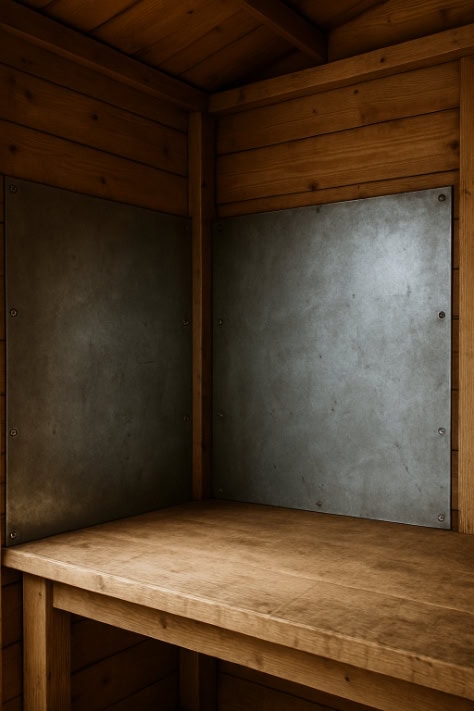
Some tasks call for more than a wooden surface. Set up one corner as your “hot zone” and build it with steel or cement board behind the bench, for instance.
A sheet of metal on the floor can also work in catching sparks and keeping flammable scraps out of the way. Alternatively, place a heat-resistant mat under your main work area or near a welding spot.
More than safety, it also helps your shed last longer and makes cleaning up easier after each project.
Upgrade to fire-resistant insulation and lining
Wood panels and foam boards might do the job, but they don’t offer much of a safety buffer in case of a fire. Your best bet for your workshop is a fire-rated plasterboard or cement boards for a tougher skin. Mineral wool insulation adds another layer of safety if your budget allows.
Fit a smoke alarm and fire extinguisher
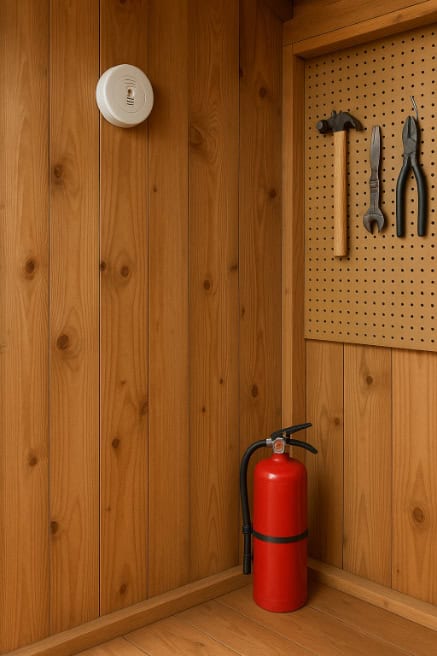
A shed fire moves fast, so early warning matters—cue smoke alarms. Fitting one can make a difference. Don’t tuck it too close to dusty corners to give it clean air, so it can pick it up before you even smell it.
Then there’s the extinguisher. Get the dry powder type as it handles almost anything you’d keep in a shed, from timber to tools and fuel. Keep it by the door, not buried under the workbench!
You may never need to reach for this kind of gear, but it’s always smart to have it on standby.
Check electrical setups regularly
Take a few minutes to look over plugs, sockets, and cords before you start. Scorch marks, loose fittings, or warm outlets usually point to a problem. You might even have to swap to surge-protected sockets or fit an RCD breaker.
You’ll know what to do once you’re sure your electrical setup runs on the right switch.
Keep your shed clear and tidy
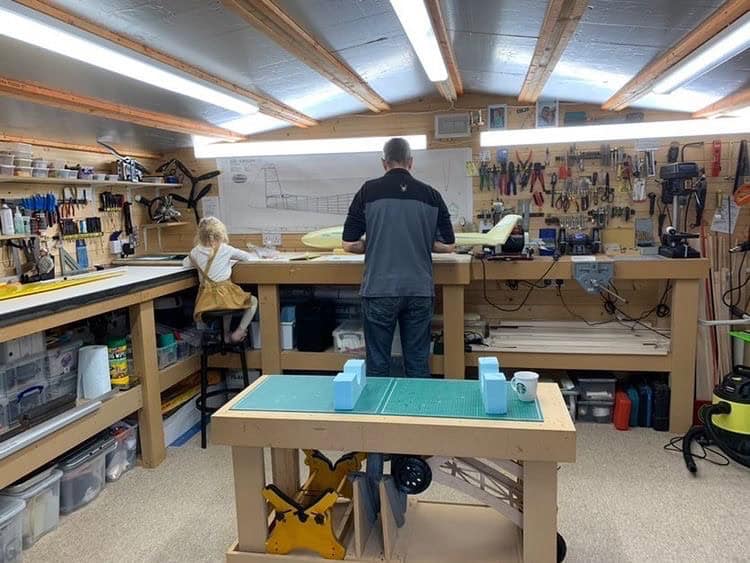
Sweeping and sorting at the end of each day goes a long way. Clear the bench, empty the bin, wipe any spills, and keep cables coiled and lids tight on containers. It keeps offcuts, rags, and shavings from piling up, and helps you spot any loose wires or leaks.
Make this part of your daily routine, and hazards stay out of the way.
Round-up
To fireproof a wooden shed, you need a few consistent habits. Treat the walls and doors with the right coating, build a safe work zone, and use fire-rated lining. Keep alarms and extinguishers ready, and stay on top of your wiring and daily clean-up.
Do these often enough, and your workshop stays ready for any project without turning into a fire risk. These tips still count even if your shed is used for storage or gardening.
You might also like: 9 Ways to Turn Your Shed into a Garden Workshop
